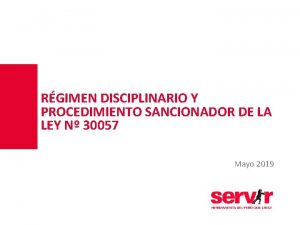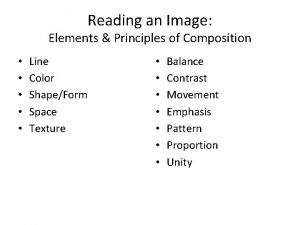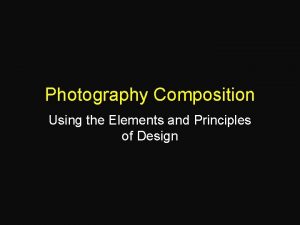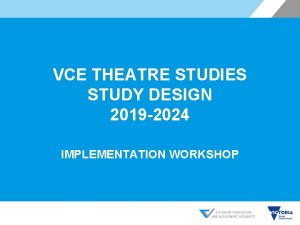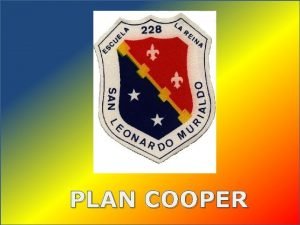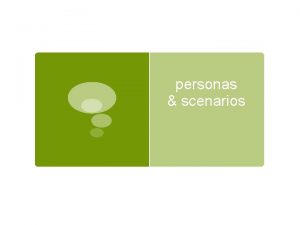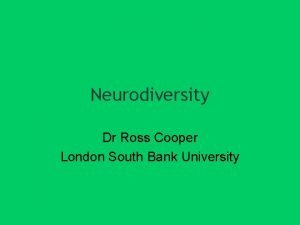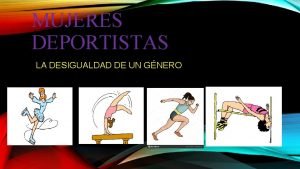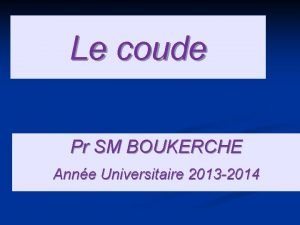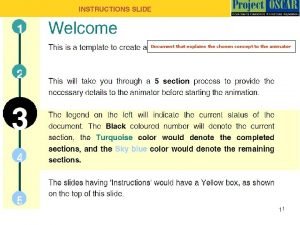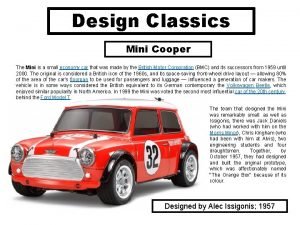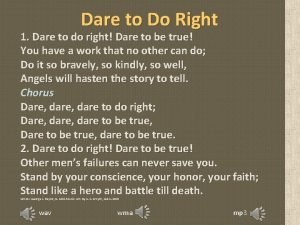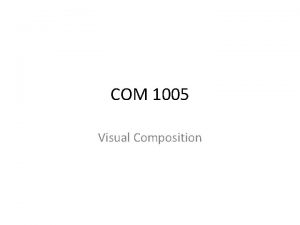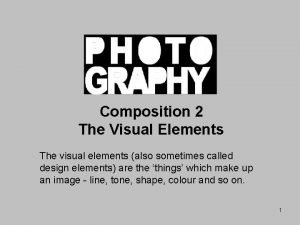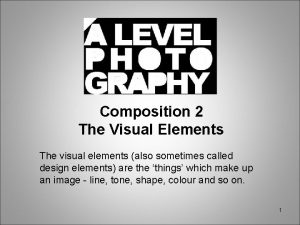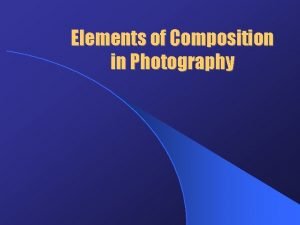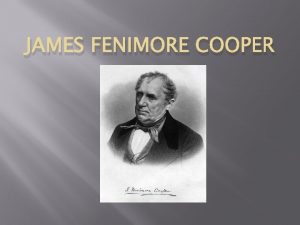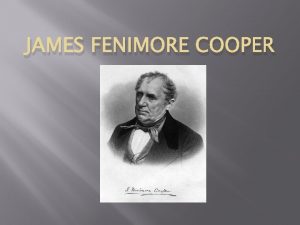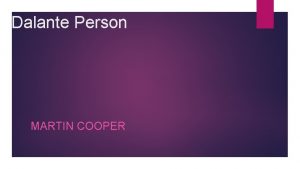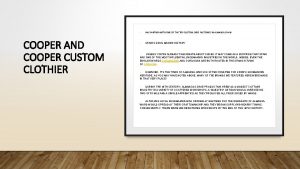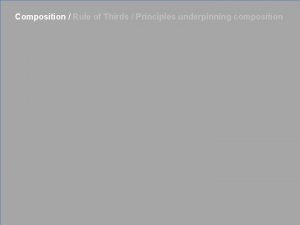COM 1005 VISUAL COMPOSITION COOPER EASTHOPE ELEMENTS OF






















- Slides: 22

COM 1005: VISUAL COMPOSITION COOPER EASTHOPE

ELEMENTS OF DESIGN

LINES • Line is a mark that is made to show definition for a shape or outline. • Lines are used to create texture in a picture • They can be in any direction and in different shapes, such as vertical and horizontal, straight and curved, and actual and implied.

TEXTURE • Texture is the definition and quality of a surface. • Texture is shown through how smooth or rough a surface is. • Texture doesn’t have to be directly drawn onto the picture but it can be implied by other sources.

COLOUR (VALUE) • Colour being used in art for contrast or blending to show different aspects of a picture. • Colour has 3 different variables which are Value, Intensity, and Chroma. Each of these variables can be used to change the way we see the colour, Value is the amount of white/black in the picture, Intensity refers to how pure a hue is, the more pure the more intense, Chroma refers to the saturation of a colour and is related to the intensity

PATTERN • Patterns are very similar to repetition, being used for creating a unison effect. • This is generally used with differing effects in each part of the pattern so that the pattern shows the same things but they are all also unique.

FORM • Form includes a 3 D object having art features that make it look more real, such as volume, thickness, and shading. • This is shown to create realism within a drawing or art project.

DIRECTION (MOTION) • Visual flow through a piece of art. • Direction usually suggests motion as you look from object to object in the image. • This can be created with pattern, or with value, by slowing changing the value or pattern from end to end of the image.

SIZE • When the physical size of objects differs across the work so that emphasis is set on different aspects. • The difference in size can be shown to represent power, fear, and dominance.

POINT • Points are just a single dot that isn’t extended in any way. • They can be used to show positive and negative space. • Multiple of them together can create the feeling of unison or being enclosed within them.

SHAPE • When an object or element is enclosed by a line. There are organic and mechanical shapes. • Mechanical shapes consist of squares, circles, and triangles. • Organic shapes are not definable by the shapes that we use in mathematics.

DEPTH • When there is an apparent difference between the front and back. • The easiest way to show depth is by overlapping different shapes.

POSITIVE AND NEGATIVE SPACE • Can be used to show multiple pictures or multiple perspectives on the same shape. • Positive and negative space is shown in the proportions of objects, lines or shapes.

PRINCIPLES OF DESIGN

BALANCE • Visual equality in form, shape, value, colour, or in other ways. • Balance doesn’t have to be shown through symmetry, as some works of art are asymmetrical.

EMPHASIS • When one area of an image is more apparent than anywhere else in the image. • This is used to create structure in the picture and show priority over other items.

PROPORTION (SCALE) • The comparative relationship of two parts of a work of art • This is used to show unity or balance or scale.

REPETITION (RHYTHM/PATTERN) • When an object is repeated in a manner that shows elements of shapes. • This can be used to create the image of unity, or individualism. • The easiest verb to be related to rhythm and pattern would be dancing.

UNITY • When different elements work together to create a pleasing image • This is common in political cartoons or renaissance art

CONTRAST • The visual difference between shapes, colours, or shades or other factors in a work of art. • This could be a difference between the background and the foreground to bring objects out and appear forward in the design.

HARMONY • Bringing together multiple different units in the picture. • If the work contained wavy lines then you would stick with organic shapes for the entire work of art.

DOMINANCE • Creating focal point in the design so that they appear superior to other parts of the work. • This is a very common technique to be used in political advertisements.
 Dậy thổi cơm mua thịt cá
Dậy thổi cơm mua thịt cá Cơm
Cơm Industrial-cabling-infrastructure
Industrial-cabling-infrastructure Informe técnico 1005-2018-servir-gpgsc
Informe técnico 1005-2018-servir-gpgsc Elements and principles of composition
Elements and principles of composition Elements and principles of photography
Elements and principles of photography Elements of theatre composition
Elements of theatre composition Apa yang dimaksud dengan pemrograman konvensional? *
Apa yang dimaksud dengan pemrograman konvensional? * Cynthia cooper accountant
Cynthia cooper accountant Christine cooper barrister
Christine cooper barrister Cooper v pate
Cooper v pate Plan cooper
Plan cooper Alan cooper persona
Alan cooper persona Dr ross cooper
Dr ross cooper Charlotte cooper frases
Charlotte cooper frases Miss cooper teacher
Miss cooper teacher Recessus sacciforme
Recessus sacciforme Turner v safely
Turner v safely Does sheldon cooper have autism
Does sheldon cooper have autism Intrinsic coherence length formula
Intrinsic coherence length formula Mini cooper design
Mini cooper design Abinadi cooper
Abinadi cooper Mo maria aianei
Mo maria aianei



